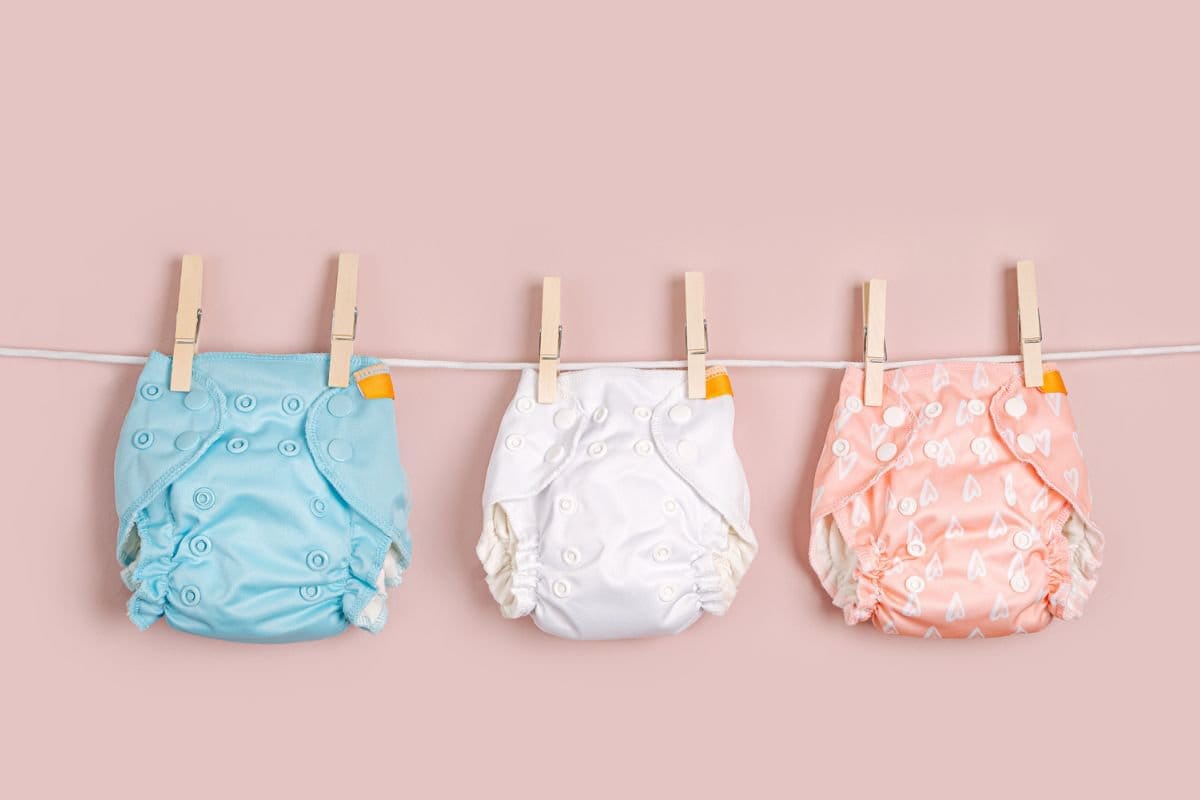
Cloth diapers vs disposables: It seems to be one of the great mom-debates of our generation, right up there with breastfeeding and sleep training, to name a few.
It wasn’t an option that was even on my radar until my third baby. That’s when budgeting became an even higher priority and at the same time, more friends were beginning to use cloth diapers.
I began asking the questions, exactly how much money do you save with cloth diapers? Is it even practical in this day and age?
How disgusting is it – for real??
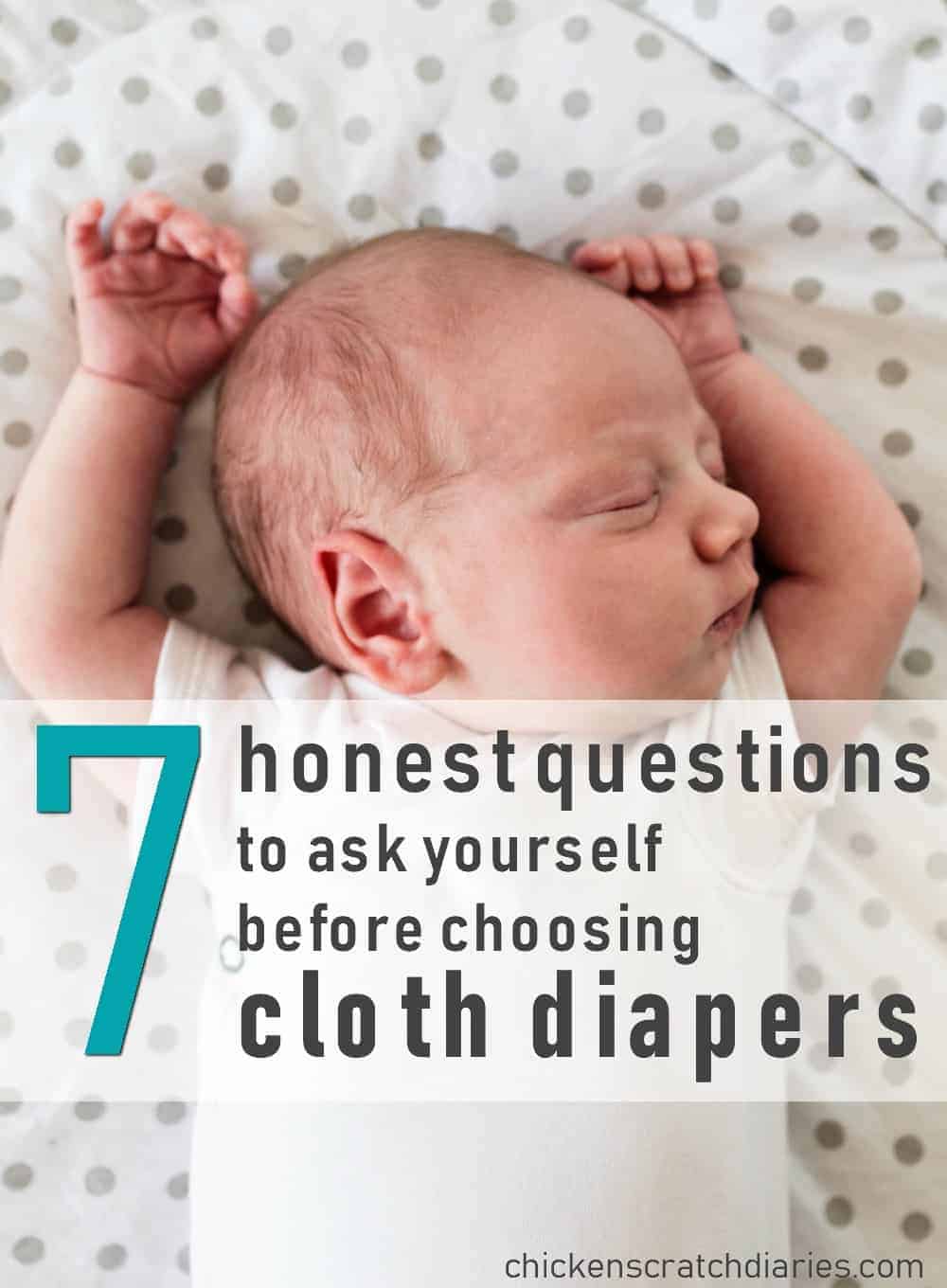
If you found this post, I’m assuming you’re either considering using cloth diapers, are curious about the benefits of cloth, or are looking to be swayed one way or another on the question of cloth versus disposable diapers.
But rather than give you an “all or nothing” type of answer, I want to weigh in with a balanced opinion on this debate so that you can make the choice that’s right for you.
This post likely contains affiliate links. Please see our disclosure for more info.
You see, people are unique, their families are unique and their circumstances can be pretty unique as well.
So that means in all things parenting, there’s generally not a cookie-cutter solution for any one of us.
Note: in this post, I’m using the term “reusable” and “cloth” diaper interchangeably. Some people prefer to compare “reusable diapers vs disposables” as a more accurate description, since not all reusable diapers are really made of cloth/fabric/cotton. You get the picture. 🙂
Cloth Diapers Versus Disposable Diapers: 7 Important Questions to Ask Yourself
I’ve written before about my quest for a more “natural” lifestyle (a definition that can vary by many standards!), and how it’s been a slow journey. And I’m totally ok with that.
I like to read the information out there on a particular subject, digest it, think about it some more and then decide how I want to apply that knowledge to my own lifestyle habits.
With that said, this post is basically a Pros and Cons of Cloth Diapers 101 which outlines some important things to consider if you’re wondering if cloth diapering is right for you.
#1. What’s Your Goal?
When considering cloth diapers, most people are either hoping to save money, go green/reduce toxins or prevent diaper rashes for their baby. Let’s take a look at each of these factors.
Can you really save money using cloth diapers?
If you’re hoping to save money by cloth diapering, you can save money. But you’ll have to be disciplined and make smart choices.
I suggest doing a lot of research before diving into the cloth diapering world because the cost of cloth diapers vary A TON and some will net you much greater savings over disposables than others.
So my initial questions were: Do cloth diapers really save money? How much do cloth diapers cost? In reality, how much money do you save using cloth diapers vs regular diapers?
In my initial research, I found that some families were able to spend as little as $100 using a small stash of very basic prefolds and covers and washing frequently, to around $500 for a more mid-range starter set that includes a variety of cloth diaper styles and accessories.
Of course, the cost only goes up from there depending on the styles and brands you choose.
Considering you can easily spend $2500 or more on disposable diapers from birth to potty training, a savings of $1500 or more is possible – and that’s just for one child.
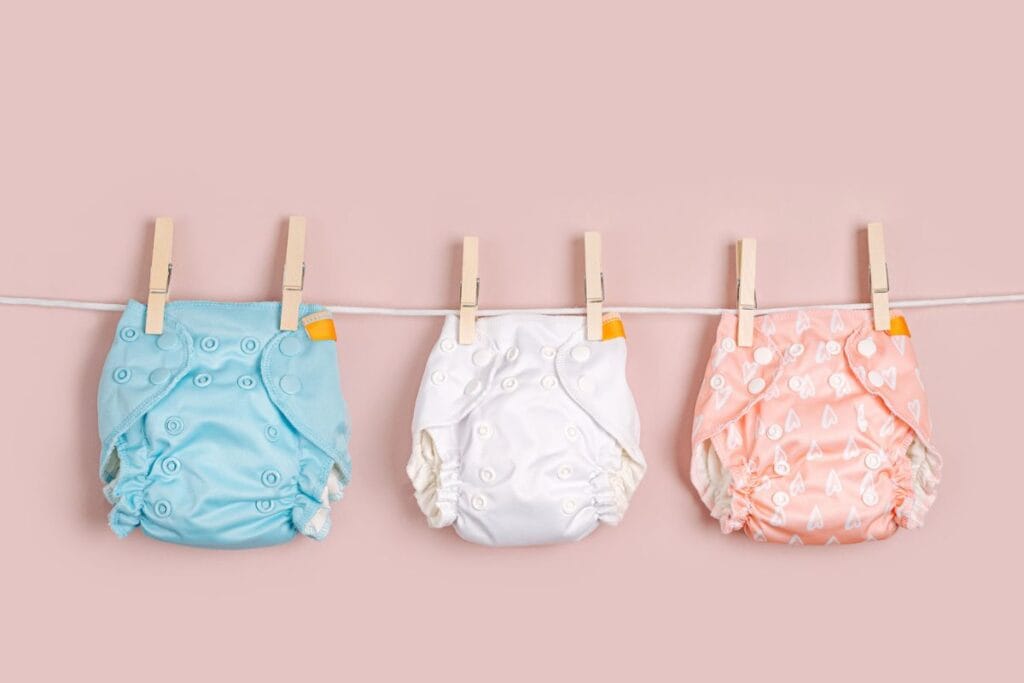
I will note that trying to pinpoint the exact cost of cloth diapers is extremely hard to do, because you also have to consider the cost of water, the extra laundry detergent and honestly, the amount of time you’re spending with the logistics of cloth diapering- which I’ll explain below!
When I initially started cloth diapering, I spent approximately $175 on the most basic accessories and slowly added items to my stash over time to minimize the cost up front. I probably had twice that amount invested by the time my child was ready to potty train.
How to actually save money on cloth diapers (instead of binging on a habit!)
One budget option for cloth diapering are the very inexpensive unbranded diapers that some refer to as “China cheapies”, found on Ebay and Amazon. I have tried these in the past and had terrible leaks within one hour of use on a newborn.
However, spending more on a cloth diaper does not always mean it will be leak-free OR a good fit for your baby. Much of this comes through trial and error.
My personal recommendations for economy cloth diapering that worked well for us: prefolds or flats with inexpensive covers; or Stay-Dry inserts with diaper covers; and Imagine brand or Nicki’s brand diapers (all types).
You can also find good deals on used diapers at sites like Jillian’s Drawers and from the seconds sales at Cotton Babies. There are numerous Facebook buy/sale/trade groups as well.
Some other things to keep in mind are the accessories you’ll need such as a diaper sprayer, a reusable diaper pail liner (you’ll likely need 2 of these), wetbags and “doublers” or extra liners for nighttime absorbency.
You’ll also have to avoid the “buy all the prints” craze if you truly want to save money!

To be honest, I had to un-join all of my cloth diaper Facebook groups because I always felt tempted to buy more diapers than I needed.
It always seemed to happen after someone mentioned a new print / brand / accessory that I MUST have. Stay strong, frugal mama. 😉
Hoping to go green?
If your goal is to be more “green” and avoid toxins, then cloth diapering might be a good fit for that sole reason.
Obviously, not contributing a few extra thousand disposable diapers to your local landfill each year is a compelling reason to cloth diaper.
Keep in mind though, that cotton is considered a “dirty” crop, and is generally bleached and treated with pesticides. So you’ll want to look for cloth diapers or prefolds that are considered “organic” and “unbleached”.
(Bumgenius diapers, for example, use certified cotton free of toxins.)
Related Posts: A Practical Mom’s Guide to a {Naturally} Healthier Home This Year
Cloth diapers and preventing diaper rash
If your goal is to avoid rashes, this may be possible with cloth diapers.
Knowing my two oldest daughters had sensitivities to several disposable diaper brands, I was eager to try cloth diapering for our third baby.
And for us, cloth diapering did mean far fewer rashes than we experienced with disposables.
However, they do require more frequent changes (every 1.5 hours is not uncommon for heavy wetters), or rashes can become a problem even with cloth.

Also, if you have a rash-prone child, you will need to be careful with your washing routine.
Choose detergents that are gentle and formulated for sensitive skin – yet are powerful enough to clean your diapers efficiently. This can be a tough balance.
While I use “free and clear” detergents for all of our clothes, I found through lots of trial and error that basic Tide original powdered detergent worked the best for us.
We were able to get our cloth diapers squeaky clean without irritating our baby’s skin. (Though it’s probably not the “greenest” option out there).
Some of the “green” detergents did not work well at all on our diapers (such as Charlie’s Soap and Bumgenius detergent). This alone can lead to ammonia build-up and – you guessed it – rashes.
Your water hardness and type of washing machine will also determine what detergents will work best for cleaning your diapers.
These are just a few big considerations with fabric diapers vs disposable that people often overlook!
Related Post: Crazy Laundry Facts (and other hacks) You Really Should Know
#2. Are you easily grossed out?
People who love cloth diapers (or who sell them) will tell you, it’s no big deal! Cloth diapering is no different than using disposables, you still have to deal with poop no matter what.
Well…not quite. Sorry to burst your cloth-lovin’ bubble, but there is a big difference between rolling up a dirty diaper and tossing it, and spraying the poop off with a diaper sprayer or dunking it in the toilet.
If your baby is exclusively breastfed, then it is a breeze until they start solid foods. Afterwards, though, you have to do something with the #2 mess because it can’t go into your washing machine.
So you’ll have to think about logistics: making sure you can transfer the diaper easily from the changing table to the restroom, and decide what method you’re going to use to remove any solid materials from the diapers.
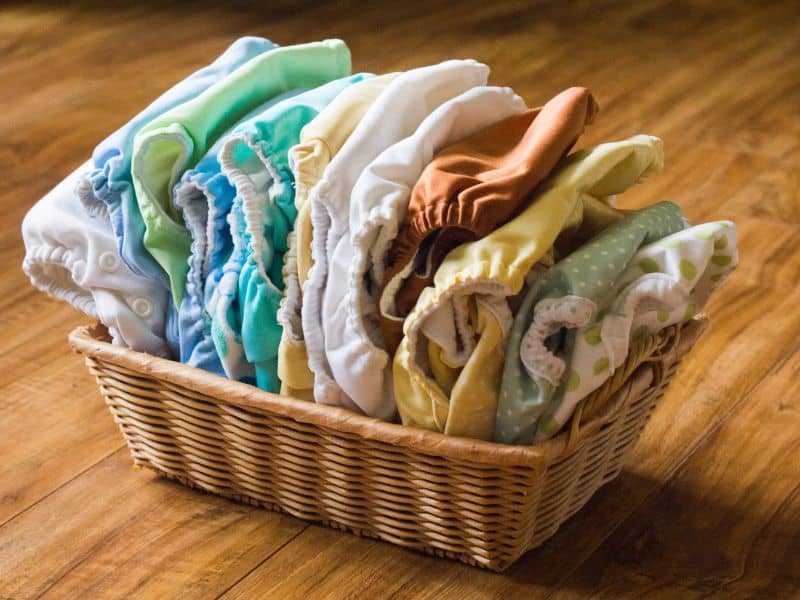
Then you have a dripping diaper to transfer to a diaper pail until wash time. (The Spray-Pal did help this process for me, to an extent.)
Some people choose to use disposable liners or even paper towels to make this process easier, but this will add to the cost.
Also, I can’t imagine that sitting on a paper towel would be that comfy on a baby’s bum? (And then there’s chemicals in paper towels to consider too.)
I’ll fully admit my bias here: after four kids and a stubborn, late potty trainee, I was SO OVER the poop. You just have to decide what you’re willing to handle.
For many, this is a non-issue after weighing the benefits they observe. Some moms find that they would prefer a cloth diaper over disposable any day!
#3. Do you have time for a cloth diapering routine?
This is a big consideration that many moms underestimate when deciding between cloth or disposable diapers.
If you’re a full-time working mom, this will mean a pile of wet/dirty cloth diapers will come home with you each night in a wet bag. The kicker is, you MUST remember to transfer them to the diaper pail or washing machine each day.
Even if you work part-time or work at home like I do part of the week, the extra laundry needs to be addressed.
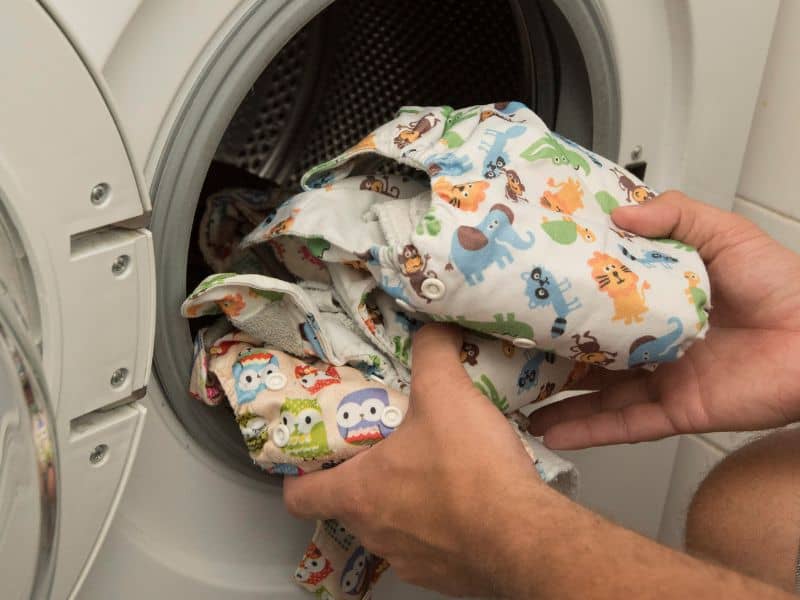
Although most people can get by with washing their diapers every other day (maybe 3 days at most), this is still an extra 2-3 loads of laundry per week.
Not only that, but they require an extra wash or rinse cycle, so you’ll likely be tying up your washing machine for an extra 30-45 minutes for each load.
So think about your family size, how much laundry you do in a week, and make sure the time investment is worthwhile and manageable for your lifestyle.

Read Next: How to Cloth Diaper as a Busy Mom (8 Pro Tips)
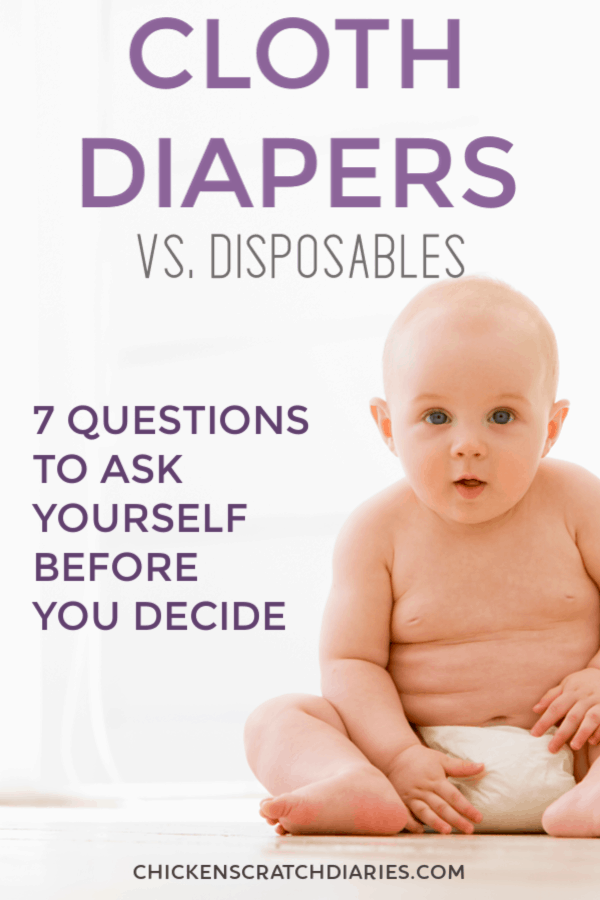
#4. Is your husband and/or babysitter(s) on board?
My husband was actually the one that saw an article on modern cloth diapering 5 years ago and suggested we try them out before baby #3 arrived.
However, once I actually started using them he wasn’t quite sure if he wanted to participate, if you know what I mean.
If your husband is like mine, it’s helpful to have all-in-one diapers that don’t require a lot of extra steps, if you’re wanting to exclusively cloth diaper.
Prefolds and covers are going to be too much for a lot of people, including most babysitters.
I was fortunate that my babysitter was very willing to work with cloth diapers even though it was new to her, but I made sure to pack only pre-stuffed or all-in-one diapers to make the process easier.
Even if you’re a stay-at-home mom, you’ll probably need an occasional sitter or help from a relative, so it’s important to think about who else might be diapering the baby and whether they’ll be on board.
If not, I think it’s wise to have some disposable diapers on hand because even if you’re super excited about your pretty cloth stash, others might not see eye-to-eye on your decision.
And in my opinion, that’s ok, especially if you value their help!
#5. What will you do when you leave the house?
There are LOTS of choices in wet bags these days which can make cloth diapering easier when you’re out and about. You can throw the wet/dirty diaper in the bag and a good quality wet bag should not leak.
I’ll be honest though, I didn’t find one particular bag that totally kept the stink at bay completely, and I tried many different brands.
This is something to consider if you’re going to be gone for several hours, or you’re at the grocery store, or really anywhere.
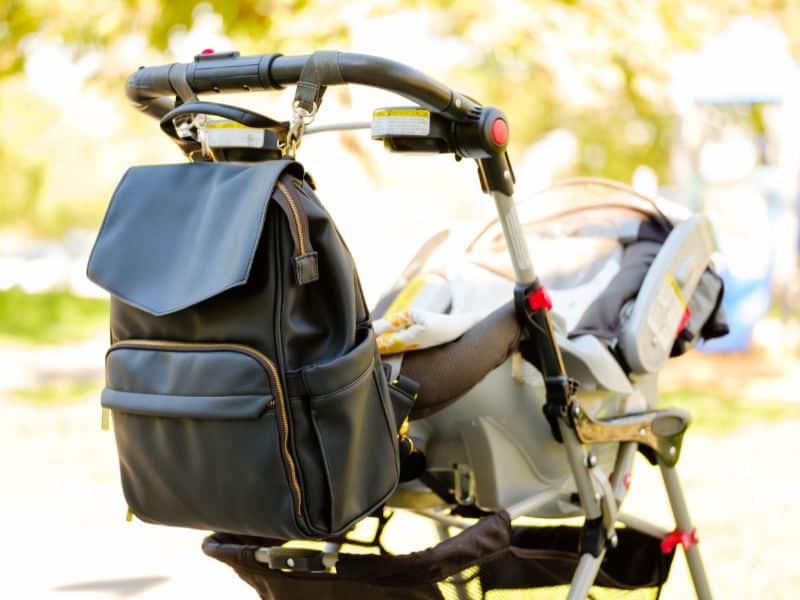
If you travel frequently with your baby, you’ll have to decide if hauling around a stash of diapers is worth your time and sanity. Some people choose to use disposables when they leave the house.
I’ll also point out that the more “part-time” you cloth diaper, the less it will save you in the end. That’s because you’ll need almost the same number of cloth diapers plus the added expense of disposables.
This is something to really think about before deciding between disposables vs. cloth diapers, if saving money is your #1 priority.
#6. How many kids are you planning or hoping to cloth diaper?
Because I chose to cloth diaper to save money primarily, I believe that cloth would have been a better choice for our family if I had started it with baby #1 instead of baby #3.
Most cloth diapers like the ones I recommended are meant to last over several years and several babies.
When you divide up the cost of a cloth diaper stash, even with the cost of water and detergent, you clearly net a significant savings versus disposables with each additional kid you cloth diaper.
However, if you’re very frugal and choose to have a smaller, less expensive diaper stash and wash more frequently as some do, you can still save money even cloth diapering one child.
Related post: What to do When You Find Out You’re Pregnant
#7. Do you mind the fluff-bum look?
One thing I did NOT expect was just how ridiculously fluffy some cloth diapers can be, especially on a tiny newborn.
You need to know that you will likely have to size-up one size in pants in order to accomodate the fluff-bum. Some people don’t mind this at all.
Baby leggings are very popular in the cloth diapering world because many moms like to show off their cute diapers anyhow.
You can pair a t-shirt with some baby legs and forgo pants all together if you choose. This comes in handy especially when it’s time to potty train.
And on that note- many cloth diapering advocates will tell you that your child will potty train sooner if you use cloth diapers, because they’re better able to feel the wetness.
However, this was NOT the case for us. In fact, I NEVER thought I would be Googling solutions to “how to potty train a 4 year old boy“, but my very first cloth-diapered kid ended up being the hardest to potty train!
But back to the fluff-bum: I’ll admit that it was a little bit of a hang-up for me! This was especially the case with baby #4, who was tiny and had the tiniest rear-end ever.
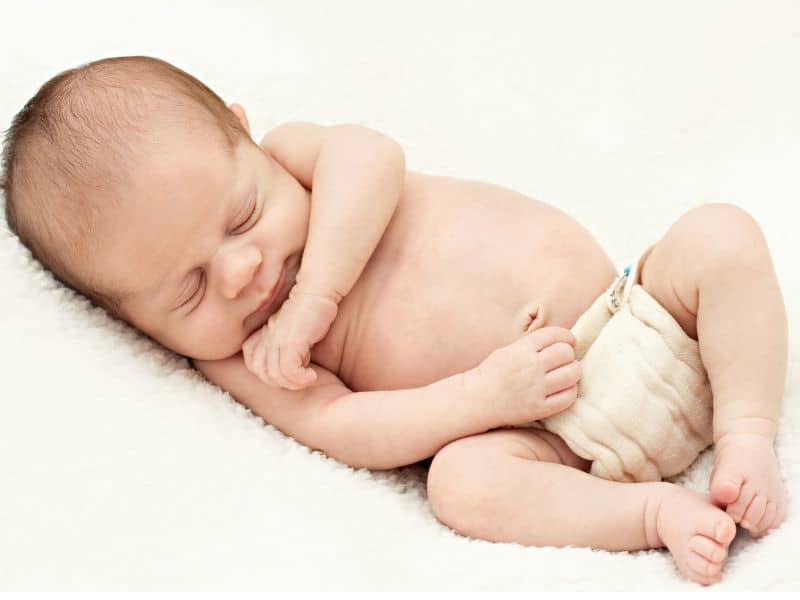
No matter what kind of diapers I tried, they always looked really bulky under clothing. It was less of an issue in the warmer, dress-wearing months.
As I’ve said before, the choices you make in parenting are yours!
Do your research, think it over and do what you feel is best for you, your baby, and your budget. At least, that was part of my decision-making process in choosing between cloth or disposable diapers.
My Takeaway: Cloth Diapers vs Disposable Diapers Debate
When I initially weighed the cost of cloth diapers compared to disposable, it was clear that the benefit to my budget was going to be a huge benefit for us, so we decided to go for it, and I’m really glad we did.
Even though I’m not currently using them for baby #4, it served a purpose in our life at the time, and I learned a lot in the process.
So overall, when weighing cloth vs disposable diapers my advice is – whatever you decide – leave some room for flexibility.
When I first decided to cloth diaper my son, I was determined to save money and use ONLY prefolds and covers.
I remember being so exhausted with a non-sleeping newborn, fumbling with Snappi’s and struggling to snap those snaps in the middle of the night…and I just about snapped myself.
Eventually, I found some easier night time options and I was even ok with using disposables overnight so that I could get some rest.
It’s OK to make adjustments as you go; don’t stress over the little things.
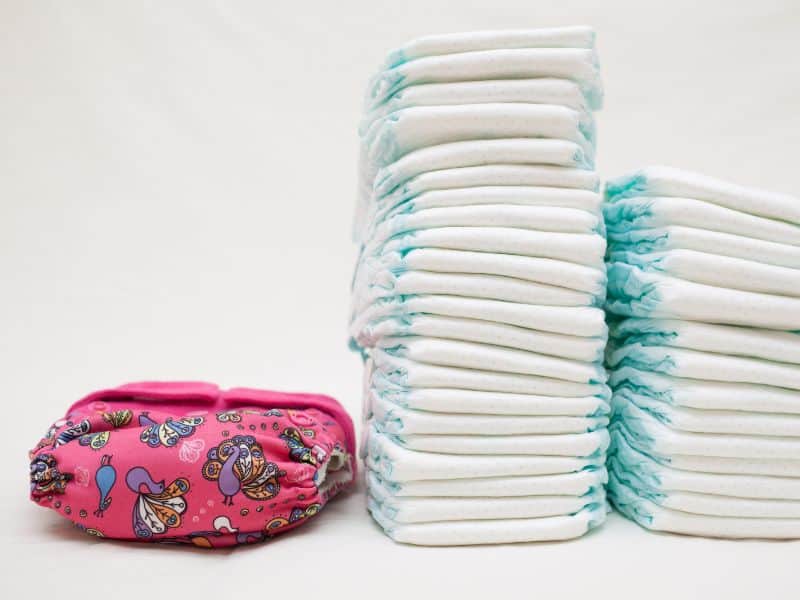
At the same time, you might decide you ONLY want to use disposable diapers at first and try cloth diapers a little later on, maybe after you establish somewhat of a routine with your new baby.
Having time to enjoy your babies is oh-so-important in these fleeting months, so focus on this, first and foremost!
You’ll figure out the details as you go and find a diapering routine that fits your family’s needs, over time.
You Might Also Like:
How to Bounce Back Postpartum and Feel Like a Human Again
The 4 Online Courses You NEED to Prepare For Your New Baby (and beyond)
Potty Training Confessions: And the One Thing That Finally Worked
Life with a Newborn: Surviving the Early Weeks
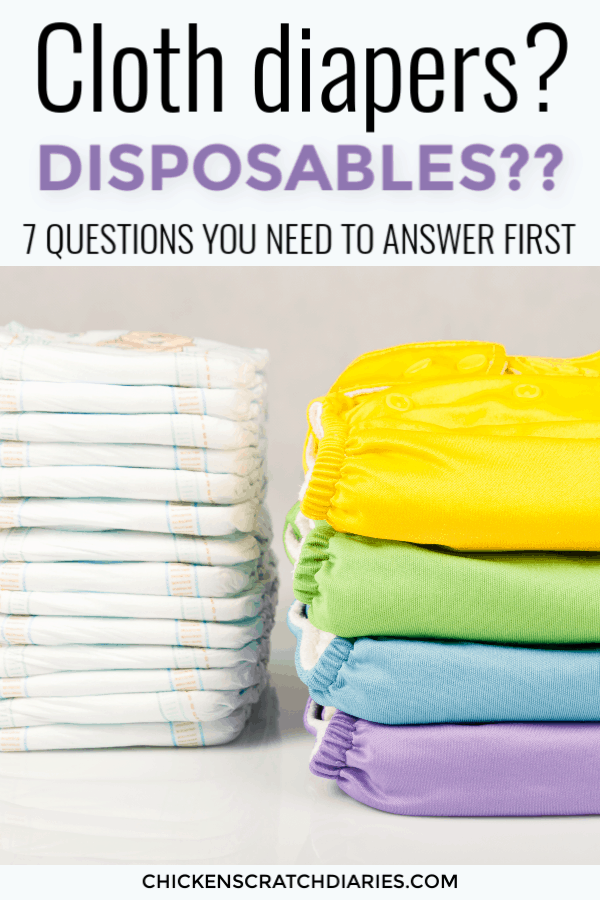

LOVE this! We have been doing cloth off and on for 6 years and have baby number 5 coming soon and we will be cloth diapering her. I appreciate how up front you are because it truly is a commitment! Its not always FUN but it has really been a good thing for our family. Thank you for sharing!
6 years, that’s awesome! I’m glad it has worked out well for you. I’m afraid this article might have came off as a bit of a “turn off” to those thinking of cloth diapering, unintentionally! I think the reason is because I never read much about the reality of it before I started the process and I felt a need to explain it, lol. But to clarify for anyone that is wondering – I actually teach classes on cloth diapering occasionally and I’m still a big proponent of it – it’s a great option especially if you’re budget-conscious.
One of the most neutral articles I’ve read on the subject, and I’ve read a lot. This is why you don’t give a terribly indecisive mom the option of cloth or disposable. I cloth diapered my son exclusively 8 years ago because it was all we had. Neither one of us had jobs so we couldn’t even afford disposables if we wanted to. Everything we had for him was given to us by family. It was a struggle but we made it work. They stressed me out but I spoke of cloth diapers highly after the fact even though I was washing them by hand multiple times a day. He never had any rashes. Even regardless of what they were washed in, and how. Now we have a daughter and I work almost full time. This child rashes at the drop of a hat. I cloth diapered her smoothly for about 8 months, then the rashes started. Meanwhile she can wear a disposable, without any barrier cream, and her bum stays completely healthy. I’m a calmer mom when she’s wearing a disposable, sadly, though I’m well aware of the environmental impact and the cost savings I’m missing out on.
You bring up some really good points – especially the fact that some don’t have the privilege of stressing over cloth versus disposable- for some moms, it’s their only feasible option. It’s a blessing to have choices, and some times we get hung up on all the options out there, don’t we! Thank you for bringing up these simple facts. In the end, we love our babies, we do the best with what we have, and anything beyond that is pretty much a personal preference. Thanks for stopping by Jen!
I really appreciate your post. I’ve been cloth diapering for almost a year and have loved it since day one. We started with flats and really enjoyed them. Now we use pocket diapers with flats as inserts. As much as I love them and encourage people to try them out, I recognize it’s not for anyone. It is a lot of laundry that not everyone is going to have time for. Plus, if someone doesn’t have a washing machine at home cloth diapering isn’t a good idea. Washing cloth diapers at the public laundry met doesn’t work well.
I just came across this article of yours after a long time. We use a mix of traditional and modern diapers on a daily basis. Since we have many daughters in our family, 6 little girls from 3 pregnancies (3 sets of twin girls), and my husband and I personally prefer children who wear traditional diapers at certain times of the day or when photos look good. love very much We therefore choose to wear traditional diapers for our children during the day when they are not out and modern diapers at night or when they are out. When I first did this with our first twin daughters there was quite a bit of inconsistency in the first 3 months due to the amount of diapers they had to deal with each day. My husband handles all the diapers in the evening after he comes home from work. I have continued to do this until now. My current twin daughters are now 1 year and 7 months old. During the day when we wear traditional diapers for them, they are especially happy. Only our second pair of twin girls did not wear traditional diapers from birth until they stopped using them. Because during that time our family moved quite often, averaging every 2 months, making it inconvenient for me and my husband to deal with their traditional diapers every day like we did with the first two or the current two. I discovered the benefits of combining these two diapers and will continue to use them for our children now and in the future if I become pregnant again.
It sounds like you have a lot of experience and have figured out a great system with cloth diapers and disposables! That’s amazing.